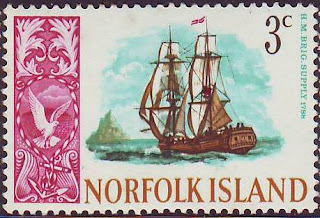
(Click to view larger picture)
Thanks for my friend through Orkut, Ms. Emilie Laurent from France for sending me this wonderful Souvenir Sheet.
Date of Issue: July 10, 1999
Scott #: 2736
Simon Bolivar (Venezuela) - Superbly designed and built, launched on 1979, has become a familiar participant in Tall Ship events. Her frequent transatlantic voyages and tours of ports in the Americas have gained a wide following for the class “A” square-rigger, exclusively used as a training vessel for the Venezuelan Navy.
Iskra (Poland) - ORP Iskra is the second sailing ship in Polish Navy with such name. She has taken the name and traditions from the sailing ship which was in service of the Polish Navy for 50 years (from 1927 to 1977). ORP Iskra was launched 06.03.1982 in Gdansk Shipyard. It is famous for a special achievement; she has, as the first of warships and the fourth of Polish sailing vessels, circumnavigated the globe (1995/96). She covered 37,000 nautical miles in her voyage of 300 days.
Statsraad Lehmkuhl (Norway) - A three-masted barque rigged sail training vessel owned and operated by the Statsraad Lehmkuhl Foundation. It is based in Bergen, Norway and contracted out for various purposes, including serving as a school ship for the Royal Norwegian Navy. She was built in 1914.
Asgard II (Ireland) - Asgard II was the Irish national sail training vessel, and the replacement for the previous Asgard. A brigantine, she was designed specifically for service as a sail training vessel by Jack Tyrrell, and built in Arklow, County Wicklow. She was commissioned on 7 March 1981.
Belle Poule (France) - The Belle-Poule is a French naval schooner used as a training vessel. She was launched on February 08, 1932. She is a replica of a type of fishing vessel which was used until 1935 off Iceland.
Belem (France) - A three-masted barque from France. Built in 1896 originally as a cargo ship, and finally in 1979, began a new career as a sail training ship.
Amerigo Vespucci (Italy) - She is a three-masted tall ship of the Marina Militare, named after the explorer Amerigo Vespucci. Her home port is Livorno, Italy. As of 2008[update], she is still in use as a school ship. The Amerigo Vespucci often participates in sailing parades and Tall Ships' Races, where she is in amicable rivalry with the Gorch Fock. When she is berthed in a port, public tours of the vessel are usually offered.
Sagres III (Portugal) - The Sagres (III) is a tall ship and school ship of the Portuguese Navy since 1961 and she is still in service.
Europa (Netherland) - The sailing ship Europa is a steel-hulled barque from the Netherlands, originally built in 1911, as a lightvessel. Europa cruises worldwide and accepts paying voyage crew (trainees) for short or long trip segments, including Ocean crossings, STA races and annual voyages to Antarctica, South Georgia, Tristan da Cunha, Cape Town. In 2002 she rounded Cape Horn.
Cuauhtemoc (Mexico) - A Sail Training vessel of the Mexican Navy, named for the last Aztec Emperor Cuauhtémoc who was captured and executed in 1525. The Cuauhtémoc is a sailing ambassador for her home country and a frequent visitor to world ports, having sailed over 400,000 nautical miles (700,000 km) in her 23 years of service with appearances at the Cutty Sark Tall Ships' Races, ASTA Tall Ships Challenges, Sail Osaka, and others.
Source: Wikipedia and other websites.
































































